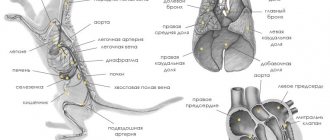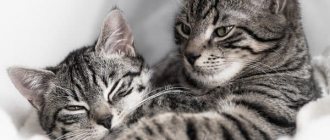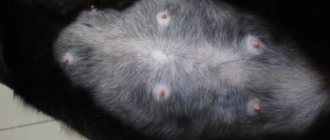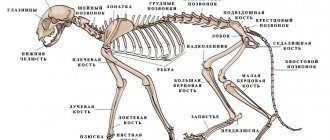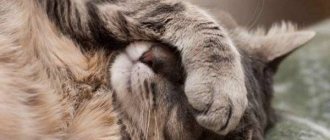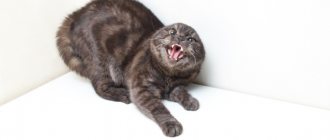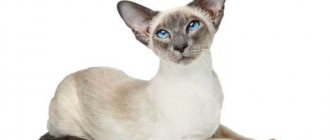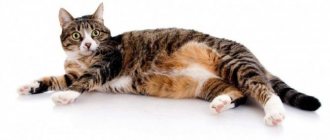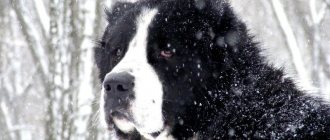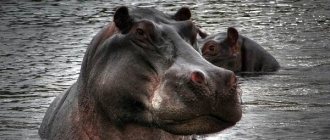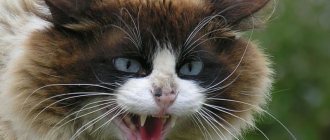Cat bones and joints
The graceful silhouette of cats is formed by the skeleton and muscles. Kittens can differ significantly in their proportions from adult animals. Often teenagers seem angular and awkward. A newborn kitten already has the necessary set of muscles, ligaments, bones and joints. During the growth process, their number does not increase, only their sizes change.
Bones are a hard organ consisting primarily of bone tissue. The bone structure also includes nerves, blood vessels, cartilage, and periosteum. Bone tissue is made up of minerals (mainly calcium and phosphorus).
The skeleton forms the skeleton of a cat's body. Bones perform not only a musculoskeletal function, but also a protective function. The bones of the skull protect the brain from mechanical damage, and the ribs help keep the heart and other internal organs intact. On average, cats have about 240 bones. Their exact number depends on the length of the tail of each individual individual.
At the ends of the bones there is an epiphysis - soft cartilaginous tissue. It is she who is responsible for the growth of bones in kittens. Typically, active bone growth in cats is observed before they reach one year of age. Due to the soft epiphysis, the bones of kittens are very fragile, so they are often injured. After reaching one year of age, the pineal gland is saturated with minerals (mainly calcium) and hardens.
Cats have the following number of vertebrae:
- 7 cervical;
- 13 breast;
- 7 lumbar;
- 3 crosses;
- up to 24 tail.
The spine and skull serve to protect the central nervous system. The thoracic vertebrae, ribs and sternum form the rib cage. Cats do not have collarbones, and therefore the limbs and chest are attached to each other using strong muscles and tendons. Thanks to this feature, cats can jump from great heights.
The forelimbs consist of:
- radius;
- humerus;
- ulna;
- shoulder blades;
- wrists;
- the bones of the paw itself.
The hind limbs consist of:
- pelvic bone;
- hips;
- shins;
- kneecap;
- heels;
- metatarsal bones;
- phalanges of fingers.
Cats literally walk on their toes rather than stepping onto surfaces with their entire foot. The cat has 5 toes on the front paws (one of the toes is shortened and does not touch the surface when walking), and on the hind paws there are 4 toes (the thumb is missing, but you can see the heels). On the fingers there are leather pouches in which the claws are hidden. If desired, the cat can release them instantly.
The skull consists of the brain and facial sections. The first has 11 bones, and the second 14. The kitten erupts its teeth at three weeks of age. There are 26 of them in total. At about six months of age, they are completely replaced by permanent teeth.
Cats are predators, and the structural features of their jaw are associated with this fact. An adult animal has 30 teeth: 12 incisors, 4 canines, 10 premolars and 4 molars.
Joints are movable joints of the skeleton. In cats, there are three types of joints: synovial and cartilaginous, sutures. It is thanks to the joints that the cat's body is so mobile.
The cartilaginous joints of cats are highly flexible, allowing the animal to take various “uncomfortable” positions. The sutures are motionless; they are located between the fused parts of the skull. They have a fairly fibrous structure.
Synovial joints serve to move bones together. At the junction, the bone is covered with cartilage tissue, which is surrounded by a smooth capsule filled with synovial fluid. Due to the mobility of these joints, the cat can run fast and jump high.
We recommend the article: Why does a cat constantly stick out its tongue?
General information
What is the anatomy of a cat's skeleton? As mentioned above, the animal’s body is divided into regions. In the head there is a face and a skull. The latter contains the anterosuperior part, the crown, the back of the head, the forehead, and the temple. The face is distinguished by the intermaxillary, buccal, orbital, oral, buccal and nasal regions. The cat's neck runs from the back of the head to the shoulder blade. The body is divided into a chest with a corresponding cavity and a back. The mammary glands are located on the chest. The back is divided into two vertebral regions. One is thoracic, the second is interscapular. In the last one on the left, in the area of the elbow joint, there is a cardiac part. The abdomen is divided into posterior, middle and anterior regions. The first contains the inguinal and pubic segments. The abdomen passes into the pelvic region. It includes the ischial, gluteal and sacral parts. The limbs of the animal are divided into pelvic and thoracic. The cat's toes have retractable claws. The animal steps on the lower part - the pads.
Sources
- https://kotsobaka.com/koshki/skelet.html
- https://usatiki.ru/skelet-koshki-podrobnaya-anatomiya/
- https://kotologia.com/lyubopyitno/stroenie-skeleta-koshek.html
- https://kotologia.com/lyubopyitno/o-vnutrennem-stroenii.html
- https://ourkoshki.ru/stroenie-koshki/vnutrene-stroenie-koshki.html
- https://pets2.me/bok/887-osobennosti-stroeniya-koshachego-skeleta.html
- https://www.syl.ru/article/222787/new_skelet-koshki-foto-i-opisanie
[collapse]
Cat muscles
It is the muscles, of which there are more than five hundred in cats, that are responsible for the movement of all parts of the animal’s body. They are divided into two types: smooth and striated.
Smooth muscles cover the internal organs. The cat cannot control them consciously. Striated muscles are attached to the skeleton and are responsible for the movement of the animal. Muscles are attached to bones by tendons made of fibrous tissue.
Cats have an unusual structure of the shoulder girdle. If a person has collarbones, with the help of which the limb is attached to the skeleton, then in cats the forelimbs are connected to the body with the help of muscles. This has to do with the way the cat moves. Thanks to this structure of the shoulder girdle, cats become more flexible. They can easily flip over in the air and use their front legs as a shock absorber.
The muscles on the hind legs are strong, thanks to this the animal can quickly gain speed and make high jumps.
Symptoms of exhaustion
Wasting in cats is easy to identify and is visually noticeable. The pet looks bony, so the spine is felt with your hands.
Other signs that indicate cachexia in cats:
- narrowing of the ribs
- loss of muscle mass,
- weakness and apathy,
- clear outline of the hind legs,
- unpleasant specific odor from the mouth,
- unquenchable thirst,
- changes in stool (for example, it becomes too dark and tarry),
- vomit.
When exhausted, the condition of the coat changes dramatically. It becomes much duller, breaks off and falls out, and in some places (usually on the sides) bald spots form that do not heal over time. In animals, wounds heal poorly, the body’s regenerative abilities decrease, and behavioral changes are observed (passivity, long sleep, etc.).
Cat skin and fur
The skin protects the animal’s body from external factors: radiation, microorganisms, chemical and mechanical damage. Wool also plays a protective function, but in addition it is responsible for temperature regulation of the body. Often, it is the quality and appearance of the coat that most eloquently indicates the health of the cat.
The epidermis is the outermost layer of the skin and performs a protective function. It is what protects the body from external factors. Essentially, the epidermis is dead skin cells that act as a barrier. Beneath them there are several layers of “living” cells - the basal layer. Next is the dermis, which contains capillaries, nerves, sebaceous glands and hair follicles.
The sebaceous glands produce oil, which makes the coat shiny. Glands located on the muzzle secrete a secretion that has a special smell and is used by cats to mark their territory. Between the fingers and near the anus there are also sebaceous glands that produce sex pheromone.
Each hair consists of cuticular cells that are layered on top of each other. From one follicle up to 6 guard hairs can grow, which are surrounded by soft and thin down. These fine hairs form a warm undercoat. Each follicle can lift hairs upward with the help of special muscles. Thanks to them, in case of danger, the cat's fur stands on end. A cat has whiskers or whiskers on its head. They perform a tactile function. The same shorter hairs grow throughout the animal's body.
Species affiliation
The term “companion animal” exists to designate those pets that a person keeps in his or her home solely for the purpose of receiving pleasant emotions and companionship. Cats definitely belong to this category, because they are tolerant of people, get along well with them, have a playful character and an attractive appearance.
It is believed that the first cat was domesticated about 9.5 thousand years ago, at the same time as horses and camels. Confirmation of this was found in 2004 in Cyprus, where during excavations a burial of a man and a cat was discovered.
The domestic cat, or Felis catus, belongs to the class of mammals and family of cats. This is the smallest representative of the order of carnivores from this family, which includes both purebred and outbred animals. It is impossible to determine the number of cats on Earth, since there are no clear statistics on this issue and no uniform criteria that would allow them to be classified specifically as domestic cats.
Domestic cats are the smallest members of the cat family.
Video: how domestic cats appeared
Cat's Breath
The respiratory system of a cat consists of the following organs:
- nose;
- nasopharynx;
- trachea;
- larynx;
- lungs;
- bronchi.
The respiratory system serves to supply the internal organs with oxygen.
In addition, it removes harmful gases and excess fluid from the body. The respiratory system is involved in thermoregulation of the body and, if necessary, it removes excess heat. Air from the nose enters the larynx and then through the bronchi it enters the lungs. The lungs are made up of small sacs called alveoli. It is they who, through their thin walls, saturate the blood with oxygen and remove carbon dioxide from it.
Cat's blood circulation
The main organ responsible for blood circulation in a cat’s body is the heart, a hollow muscular organ located in the chest. The ribs and muscles protect it from mechanical damage. The cat's heart consists of 2 ventricles and 2 atria.
Cats have two circles of blood circulation: large and small. Arteries and capillaries come from the heart and penetrate all internal organs. It is through them that all organs are saturated with oxygen - this is a large circle of blood circulation. During the pulmonary circulation, blood saturated with carbon dioxide enters the right ventricle of the heart, from there it is sent to the lungs, where it is again saturated with oxygen and returned to the heart muscle.
By feeling the artery in your cat's thigh, you can measure her pulse. Normally, it is about 100-150 beats per minute in adult animals, and about 150-190 beats per minute in kittens.
We recommend the article: What causes diarrhea in a cat?
Cat blood has a number of characteristics. It has a higher coagulability compared to humans. Blood consists of the following elements: plasma, red and white blood cells, platelets.
Red blood cells are responsible for saturating the body with oxygen, white blood cells are responsible for immunity and protect the body from germs and viruses, platelets are responsible for blood clotting. Plasma serves to transport and distribute nutrients and remove waste from the body.
Brain and endocrine system
The brain is the central organ of the nervous system. It analyzes the signals received through the nerve endings and converts them into commands that it gives to the animal’s body. Although this organ makes up 1% of a cat's body weight, it uses about 20% of the blood pumped by the heart muscle.
The brain is made up of neurons. The two hemispheres are responsible for the animal's emotions, learning and behavior. The cerebellum is responsible for movement. The brain is attached to the peripheral nervous system via the brainstem. Cats do not rely entirely on instinct. They learn to interact with the outside world and other living beings. The cat's behavior can be corrected. Little kittens need socialization and constant contact with humans, otherwise they will become wild. At an older age, it will be much more difficult to accustom them.
Hormones play a major role in the functioning of a cat’s body. The hypothalamus produces antidiuretic hormone (affects the composition of urine), corticoliberin (thanks to this hormone, the adrenal glands secrete cortisol in response to danger), oxytocin (affects milk production, and also plays an important role during pregnancy and childbirth). The pituitary gland produces growth hormones.
The adrenal glands are an important part of the endocrine system. They secrete cortisol, which helps to respond to injuries in a timely manner. They also secrete epinephrine, this hormone regulates the heart rate, and the frequency of dilation of blood vessels also depends on it.
What is anatomy?
Anatomy is a branch of science devoted to the study of the structure of the bodies of various creatures. Anatomy helps to establish the common features inherent in a particular species of animal. This science studies the external characteristics of species, the location of internal organs relative to each other, and clarifies their significance and functions.
Anatomy includes the following areas of science:
- osteology , which studies bone structures;
- myology , which studies the structure of muscle fibers, the location of muscles and features of work;
- syndesmology , which studies the elements connecting parts of the skeleton;
- angiology , which studies blood vessels, lymphatic and circulatory systems;
- neurology , aimed at studying the functions of nodes and parts of the nervous system;
- splanchnology , systematizing knowledge about the structure of the respiratory, digestive, excretory and reproductive organs;
- endocrinology , explaining the significance of the endocrine glands;
- aesthesiology , which studies the functioning of the senses.
These scientific disciplines make it possible to trace how the formation of the most important systems occurs, as well as to establish their interrelationships. By studying the anatomy of a cat, you can find out what distinguishes it from other mammals. Anatomical knowledge allows us to understand the purpose of certain structures of the body.
Nervous system of a cat
The nervous system connects the entire body together and ensures its effective functioning. Nerve fibers are located throughout the animal's body. In response to stimuli, they transmit electrical impulses to the brain and spinal cord.
The central nervous system is divided into several segments:
- Brain.
- Spinal cord.
- Brain stem.
The nerves that are found throughout a cat's body make up the peripheral nervous system. It is she who is responsible for receiving information and transmitting signals to the central nervous system. In addition, it transmits brain commands to different parts of the body.
The autonomic nervous system is a group of nerves that transmit signals to the heart, blood vessels, and bladder. This system operates autonomously; the cat cannot control it consciously.
Kittens are born with an incompletely formed nervous system. They have little control over their body, mostly sleep and eat. In addition, kittens are born blind and deaf. The kitten learns to more or less control its body and stand on its paws around the third week of life. At the same time, the eyes open. Hearing is fully formed by 4 weeks. After another couple of weeks, the kitten begins to actively run and jump.
Cat's sense organs
Of all mammals, cats boast some of the largest eyes relative to their overall body size. The eyes are located in front of the muzzle. Thanks to the special structure and location of the eyes, a cat can almost accurately determine the distance to certain objects.
The iris of the eye is very mobile, so the pupil can easily change its shape. Thanks to this feature, the cat’s very sensitive eyes do not experience discomfort in bright light. Cats have very sharp eyesight, and they can navigate well in the dark. They have a nictitating membrane, or third eyelid. It serves to protect against foreign objects and debris and also helps to moisturize the surface of the eye.
We recommend the article: What do black dots in a cat’s fur indicate?
The ears are located on top of the head. They often have a triangular shape. The ear consists of the following sections: auditory canal, eardrum, middle ear bone, cochlea, vestibular apparatus, auditory nerve. Cats have very sensitive hearing. They are able to distinguish more than 100 different sounds.
Smells are very important in a cat’s life, since with their help she marks her territory, communicates, distinguishes her own from strangers, and determines how edible this or that food is. The turbinates are lined with sticky membranes that trap odors. Cats also have a Jacobs organ in the roof of their mouth; it is a small tube, no more than a centimeter long, which is simultaneously sensitive to both smells and tastes.
A cat's tongue is covered with taste buds. They are able to distinguish between salty, bitter, sweet and sour tastes. The tongue is also covered with horny hooks, with the help of which the cat cleans its fur.
Cats' paw pads are very sensitive, which is why the animal often prefers to touch the object it wants to examine with its paw. Also, the cat's entire body is covered with tactile hairs.
Features of the external structure of cats
On average, the length of an adult cat excluding the tail is 50-60 cm, with the tail - 75-85 cm. Sexual dimorphism is weak - females are only 5-7 cm smaller than males. The height of cats at the withers is 25-28 cm.
The largest cat, according to the Guinness Book of Records, is a Maine Coon from Melbourne named Omar, its length is 121.9 cm.
A pet weighs on average from 2.5 to 6.5 kg, but there are breeds whose representatives are considered real heavyweights. For example, the jungle cat, Siberian cat and Maine Coon can gain weight up to 13 kg.
Head
Cats have an elongated or rounded head. Relative to the entire body, it is small in size. For example, wild relatives like the tiger and lion have a larger muzzle due to a more massive jaw and pronounced fangs.
The surface pattern of a cat's nose is unique, like a human fingerprint.
The cat can rightfully be called a big-eyed animal. And it's not just a matter of keen eyesight. Cats are among the ten animals with the largest eye sizes relative to the size of their muzzle. Thanks to this feature, cats can immediately see a picture with a 200° field of view without moving their head (for comparison, a person’s visual range is only 180°).
Each cat’s ear is controlled by more than 10 muscles, thanks to which cats can change the position of the ears on the head - press them, bend them, turn them towards the sound, etc.
A special feature of the cat is the presence of very sensitive whiskers on its face. These are hard whiskers, which at the base are penetrated by a large number of nerve endings. Under no circumstances should you pull, let alone tear out, these whiskers - this causes pain to the animal.
With the help of whiskers, the cat receives information about everything that surrounds him - about objects, about the weather, approaching enemies and even the temperature of food
Torso
The body of a cat is divided into the back, chest, and abdomen. According to the relationship of the body to the head and paws, cats have three body types:
- Heavy - these cats have a wide body, a large head and rather short but dense legs and tail.
- Lungs - the body is slender and elongated, the head seems miniature in comparison.
- Medium - in this case, there is maximum harmony between the sizes of the body, head and tail. As a rule, outbred animals have an average body type.
Hair coat is of great importance for a cat. There are no wild naked cats (sphynxes are the result of artificial selection, they are not able to survive in nature). Wool protects the animal from cold, direct rays of the sun, and injuries. Miniature muscles located at the roots of the hairs can raise them on end - at such moments, cats seem larger than usual. This is a defense mechanism designed to scare off the enemy.
Cats love to climb higher - their long tail allows them to maintain balance.
Limbs
Some people mistakenly consider only the pads on which the animal steps when walking and running to be a cat's foot. In fact, it is longer and reaches a protuberance that is a vestigial finger (it can be easily felt, since the claw never retracts into it). It turns out that the cat moves “on tiptoe” all the time.
The photo shows that cats have five fingers - 4 on one side of the pad and one, rudimentary, located away from their “comrades”, on the opposite side
Digestive and excretory systems
Food enters the cat's stomach through the esophagus. The walls of the esophagus are covered with muscles. They make wave-like movements and push food into the stomach. The stomach of cats is quite spacious. The inside is covered with folds that help chop and digest food. The walls of the stomach secrete acid, which is very important for digestion. Processed food enters the duodenum through the pyloric sphincter.
The duodenum is the first section of the small intestine. The liver and pancreas secrete enzymes that are mixed with food in the duodenum. Next, the food enters the jejunum. It is covered with villi, which are needed to extract all remaining nutrients from food. Next, the food enters the ileum, and then into the large intestine.
The large intestine absorbs fluid from stool. In addition, the large intestine serves to store feces until the animal is ready to defecate. The large intestine consists of the following sections: cecum, colon and rectum.
Excess fluid is removed from the cat’s body through the work of the bladder, ureters and kidneys. In addition, the water-salt balance of the body depends on these organs. Urine is formed in the kidneys and passes through the ureters to the bladder.
A cat is able to control urination thanks to the closing muscle, which retains fluid in the body. Urine exits through the urethra, which in cats ends at the head of the penis, and in cats in the vagina.
